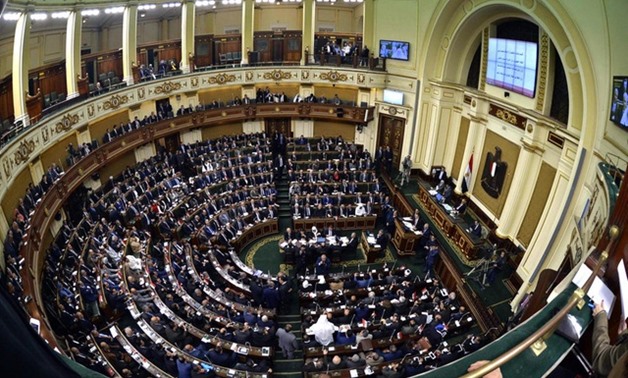
FILE - Egypt’s House of Representatives
CAIRO - 2 June 2018: The House of Representatives is known to be the country’s legislative authority. Its members are either elected or appointed by the president. For Egypt and according to 2014’s Constitution, the Parliament’s main role is to implement the state’s general policy, the general economic and social development plan, and to designate the state’s budget.
Egypt’s Parliament also represents a supervisory authority over officials in the executive bodies; they have the permission to summon minsters and officials to question them over incidents and decisions, they also have the authority to approve or abolish international agreements with other states.
On Saturday, President Abdel Fatah al-Sisi is going to take oath for his second term of presidency that he won last March.
The elections that took place between March 26 and 28 witnessed a competition between only two candidates: incumbent President Abdel Fatah al-Sisi and head of El-Ghad Party Moussa Moustafa Moussa.
Sisi garnered 97.08 percent of valid votes in the 2018 presidential election, where more than 21.8 million people voted for him. His hardly-known competitor, Al-Ghad Party chairperson Moussa Moustafa Moussa, received 656,534 votes, making up 2.9 percent of the valid ballots.
The turnout stood at 24,254,152 voters; 41 percent of the electorate.
In 2018, void votes made up 7.27 percent of the total votes, accounting to 1.762 million ballots. If void votes are not excluded from the result, Sisi's share of the total votes would be 90 percent.
However; Egypt’s House of Representatives is considered to be one of the most historical places that witnessed huge and rich developments in its Parliamentary political life.
What we know about Egypt’s parliament history

The building itself was established by Ismail Pasha during the monarchy era in 1866. The purpose of establishing the building in the first place was to have it be the headquarters for ministry, named by then as the Irrigation and Public Works. It was responsible for many things including irrigation and tunneling along with other missions assigned by the government.
During the same era, Ismail Pasha wanted to establish the first Egyptian Parliament, so he did, and the first meeting for it was inside that building, which created a historical link between it and parliamentary political life. The parliament during this time was not as effective as the politicians wished for it to be. People at the time were not used to thinking, deciding or choosing politically for themselves; however years later the whole political scene changed.
Egypt struggled a lot to issue its constitution; the first issued one by Tewfik Pasha in 1882, was canceled shortly later by the British occupation at the time. In 1923 another constitution was declared and accordingly the first official parliament session was held officially on March 15, 1924. From this time on, Egypt enjoyed a rich parliamentary political life which included both the Shura and representative councils at the same building that was built in 1866.
The building is considered to have a unique and special design that mixes between different architectural styles, varying between the European and Islamic.
The main round hall diameter reaches 22 meters, and is up to 30 meters. The hall is also topped by a dome with a round part covered with glass. This medium dome is topped with another smaller one with four windows decorated.
The two-story hall has the republican emblem at the center of it, and the presidential platform right in front.
Frequent maintenance and restoration services takes place inside the building to preserve its original European-Islamic design. Recently, a museum for the history of parliamentary political life in Egypt was established inside the building.
In August 2008, a fire broke out inside the Parliament’s building which lasted for more than 16 hours. Despite this fire extending to erase a huge part of Egypt’s political history including the hall that witnessed 1923’s constitution deliberations, the maintenance work managed to restore it again after a short while.

Egypt’s current Parliament elected in 2015 consists of 596 members in total; 448 of them elected through the individual candidacy system, 120 through the list candidacy system along with 28 members (an estimated fiver percent of the members) that are appointed by the president.
Sisi won’t be the first president to take oath inside the Parliament, late president Gamal Abdel Nasser was the first to hold the swearing-in ceremony inside the Parliament in 1957.




Comments
Leave a Comment